Cellulose Nanofiber Films and Their Vibration Energy Harvesting
Abstract
:1. Introduction
2. Materials and Methods
2.1. Materials
2.2. CNF Isolation
2.3. Film Preparation
2.4. Film Alignment
2.5. Film Characterization
2.6. Vibration Energy Harvester
3. Results
3.1. Isolated CNF
3.2. Prepared Films
3.3. Mechanical and Piezoelectric Properties
3.4. Vibration Energy Harvesting
4. Conclusions
Author Contributions
Funding
Institutional Review Board Statement
Informed Consent Statement
Data Availability Statement
Conflicts of Interest
References
- Kim, H.S.; Kim, J.-H.; Kim, J. A review of piezoelectric energy harvesting based on vibration. Int. J. Precis. Eng. Manuf. 2011, 12, 1129–1141. [Google Scholar] [CrossRef]
- Kim, H.C.; Mun, S.; Ko, H.-U.; Zhai, L.; Abdullahil, K.; Kim, J. Renewable smart materials. Smart Mater. Struct. 2016, 25, 073001. [Google Scholar] [CrossRef]
- Klemm, D.; Heublein, B.; Fink, H.P.; Bohn, A. Cellulose: Fascinating biopolymer and sustainable raw material. Angew. Chem. Int. Ed. 2005, 44, 3358–3393. [Google Scholar] [CrossRef] [PubMed]
- Kim, J.H.; Shim, B.S.; Kim, H.S.; Lee, Y.J.; Min, S.K.; Jang, D.; Abas, Z.; Kim, J. Review of nanocellulose for sustainable future materials. Int. J. Precis. Eng. Manuf.-Green Technol. 2015, 2, 197–213. [Google Scholar] [CrossRef] [Green Version]
- Klemm, D.; Cranston, E.D.; Fischer, D.; Gama, M.; Kedzior, S.A.; Kralisch, D.; Kramer, F.; Kondo, T.; Lindström, T.; Nietzsche, S.; et al. Nanocellulose as a natural source for groundbreaking applications in materials science: Today’s state. Mater. Today 2018, 21, 720–748. [Google Scholar] [CrossRef] [Green Version]
- Kim, J.; Yun, S.R.; Ounaies, Z. Discovery of cellulose as a smart material. Macromolecules 2006, 39, 4202–4206. [Google Scholar] [CrossRef]
- Rajala, S.; Siponkoski, T.; Sarlin, E.; Mettanen, M.; Vuoriluoto, M.; Pammo, A.; Juuti, J.; Rojas, O.J.; Franssila, S.; Tuukkanen, S. Cellulose nanofibril film as a piezoelectric sensor material. ACS Appl. Mater. Interfaces 2016, 8, 15607–15614. [Google Scholar] [CrossRef] [Green Version]
- Yun, G.Y.; Kim, H.S.; Kim, J.; Kim, K.; Yang, C. Effect of aligned cellulose film to the performance of electro-active paper actuator. Sens. Actuators A Phys. 2008, 141, 530–535. [Google Scholar] [CrossRef]
- Torres-Rendon, J.G.; Schacher, F.H.; Ifuku, S.; Walther, A. Mechanical performance of macrofibers of cellulose and chitin nanofibrils aligned by wet-stretching: A critical comparison. Biomacromolecules 2014, 15, 2709–2717. [Google Scholar] [CrossRef]
- Kim, H.C.; Kim, D.; Lee, J.; Zhai, L.; Kim, J. Effect of wet spinning and stretching to enhance mechanical properties of cellulose nanofiber filament. Int. J. Precis. Eng. Manuf.-Green Technol. 2019, 6, 567–575. [Google Scholar] [CrossRef] [Green Version]
- Choi, E.S.; Kim, H.C.; Muthoka, R.M.; Panicker, P.S.; Agumba, D.O.; Kim, J. Aligned cellulose nanofiber composite made with electrospinning of cellulose nanofiber-polyvinyl alcohol and its vibration energy harvesting. Compos. Sci. Technol. 2021, 209, 108795. [Google Scholar] [CrossRef]
- Hai, L.V.; Zhai, L.; Kim, H.C.; Kim, J.W.; Choi, E.S.; Kim, J. Cellulose nanofibers isolated by TEMPO-oxidation and aqueous counter collision methods. Carbohydr. Polym. 2018, 191, 65–70. [Google Scholar] [PubMed]
- Isogai, A.; Kato, Y. Preparation of polyronic acid from cellulose by TEMPO-mediated Oxidation. Cellulose 1998, 5, 153–164. [Google Scholar] [CrossRef]
- Yun, S.; Kim, J.; Lee, K.S. Evaluation of cellulose electro-active paper made by tape casting and zone stretching methods. Int. J. Precis. Eng. Manuf. 2010, 11, 987–990. [Google Scholar] [CrossRef]
- Sugiyama, J.; Chanzy, H.; Maret, G. Orientation of cellulose microcrystals by strong magnetic fields. Macromolecules 1992, 25, 4232–4234. [Google Scholar] [CrossRef]
- Kim, H.C.; Kim, J.W.; Zhai, L.; Kim, J. Strong and tough cellulose long fibers made by aligning cellulose nanofibers under magnetic and electric fields. Cellulose 2019, 26, 5821–5829. [Google Scholar] [CrossRef]
- Panicker, P.S.; Kim, H.C.; Agumba, D.O.; Muthoka, R.M.; Kim, J. Electric field-assisted wet-spinning to fabricate strong, tough and continuous nanocellulose long fibers. Cellulose 2022, 29, 3499–3511. [Google Scholar] [CrossRef]
- Yun, S.; Jang, S.; Yun, G.-Y.; Kim, J. Electrically aligned cellulose film for electro-active paper and its piezoelectricity. Smart Mater. Struct. 2009, 18, 117001. [Google Scholar] [CrossRef]
- Kim, H.S.; Li, Y.; Kim, J. Electro-mechanical behavior and direct piezoelectricity of cellulose electro-active paper. Sens. Actuators A Phys. 2008, 147, 304–309. [Google Scholar] [CrossRef]
- Mun, S.; Ko, H.-U.; Zhai, L.; Min, S.K.; Kim, H.C.; Kim, J. Enhanced electromechanical behavior of cellulose film by zinc oxide nanocoating and its vibration energy harvesting. Acta Mater. 2016, 114, 1–6. [Google Scholar] [CrossRef]
- Kondo, T.; Kose, R.; Naito, H.; Kasai, W. Aqueous counter collision using paired water jets as a novel means of preparing bio-nanofibers. Carbohydr. Polym. 2014, 112, 284–290. [Google Scholar] [CrossRef] [PubMed]
- Duzik, A.; Ko, H.-U.; Kim, H.-J.; Kim, J.; Kim, J.H.; Cho, S.H.; Bryant, R.G. Fabrication Method, Characteristics and Applications of Cellulose Nano Fiber (CNF) Film; NASA/TM-2019-220268; NASA Langley Research Center: Hampton, VA, USA, 2019. [Google Scholar]
- Zhai, L.; Kim, H.C.; Kim, J.W.; Kim, J. Alignment effect on the piezoelectric properties of ultrathin cellulose nanofiber films. ACS Appl. Bio Mater. 2020, 3, 4329–4334. [Google Scholar] [CrossRef] [PubMed]
- Wang, M.; Miao, X.; Li, H.; Chen, C. Effect of length of cellulose nanofibers on mechanical reinforcement of polyvinyl alcohol. Polymers 2022, 14, 128. [Google Scholar] [CrossRef] [PubMed]
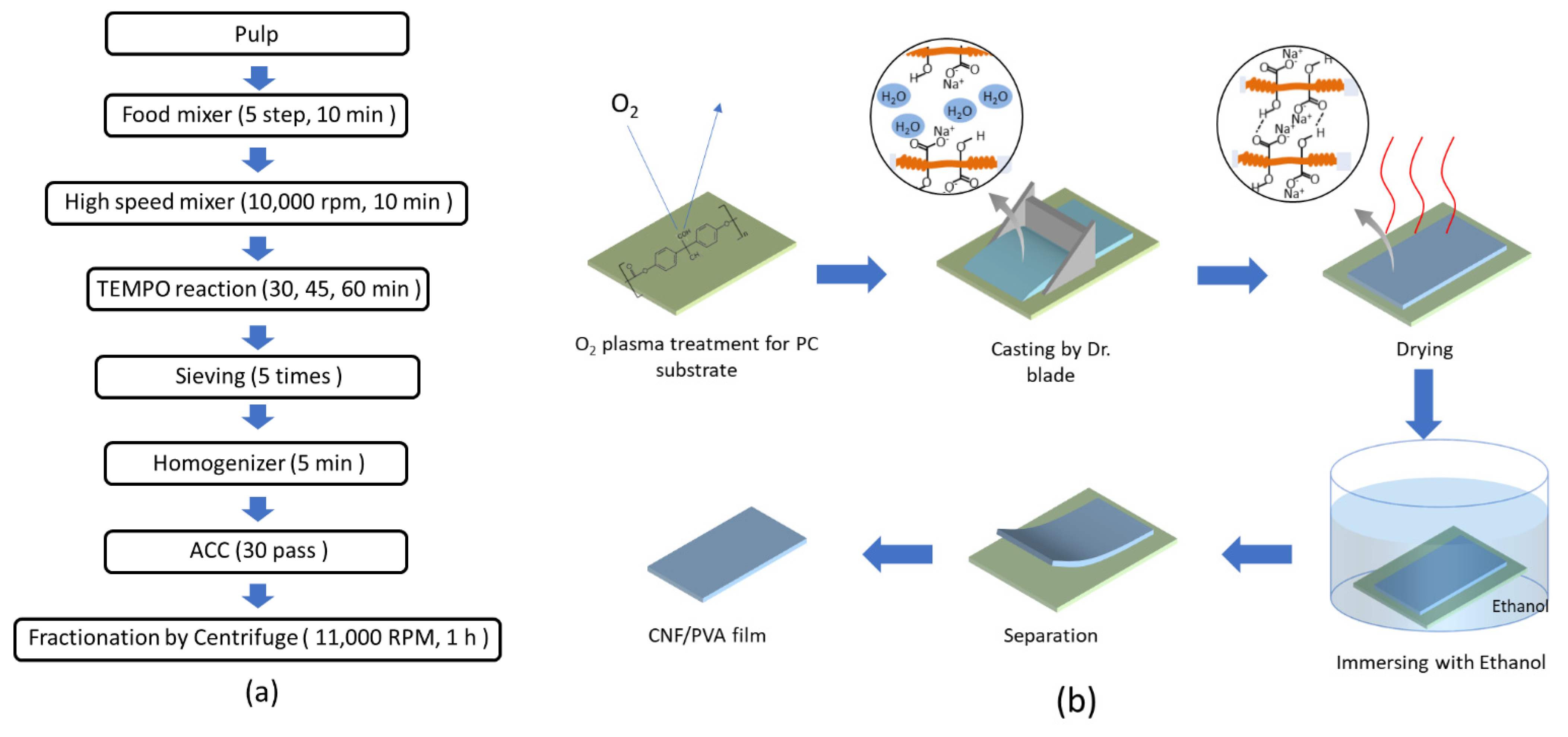

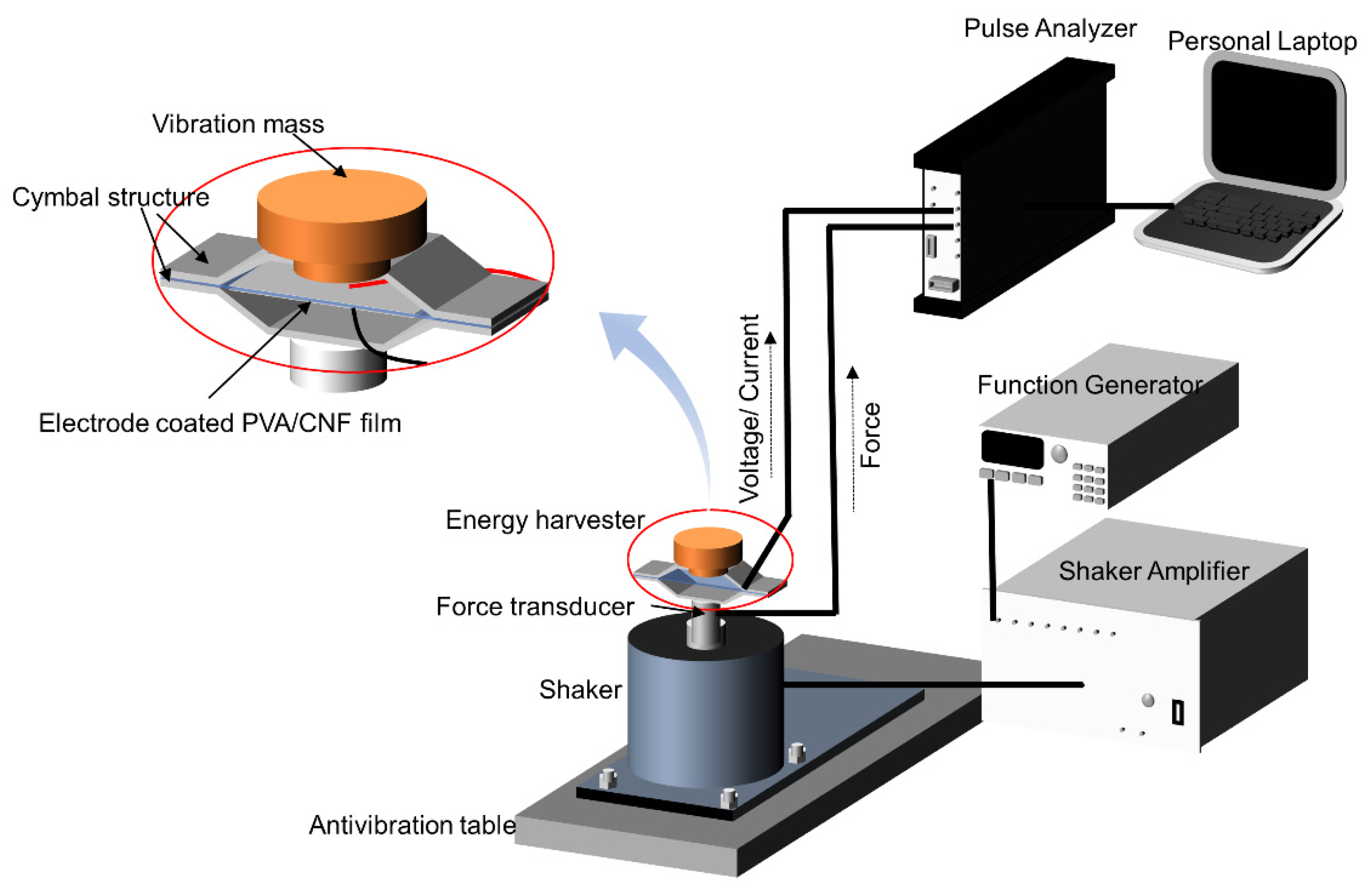
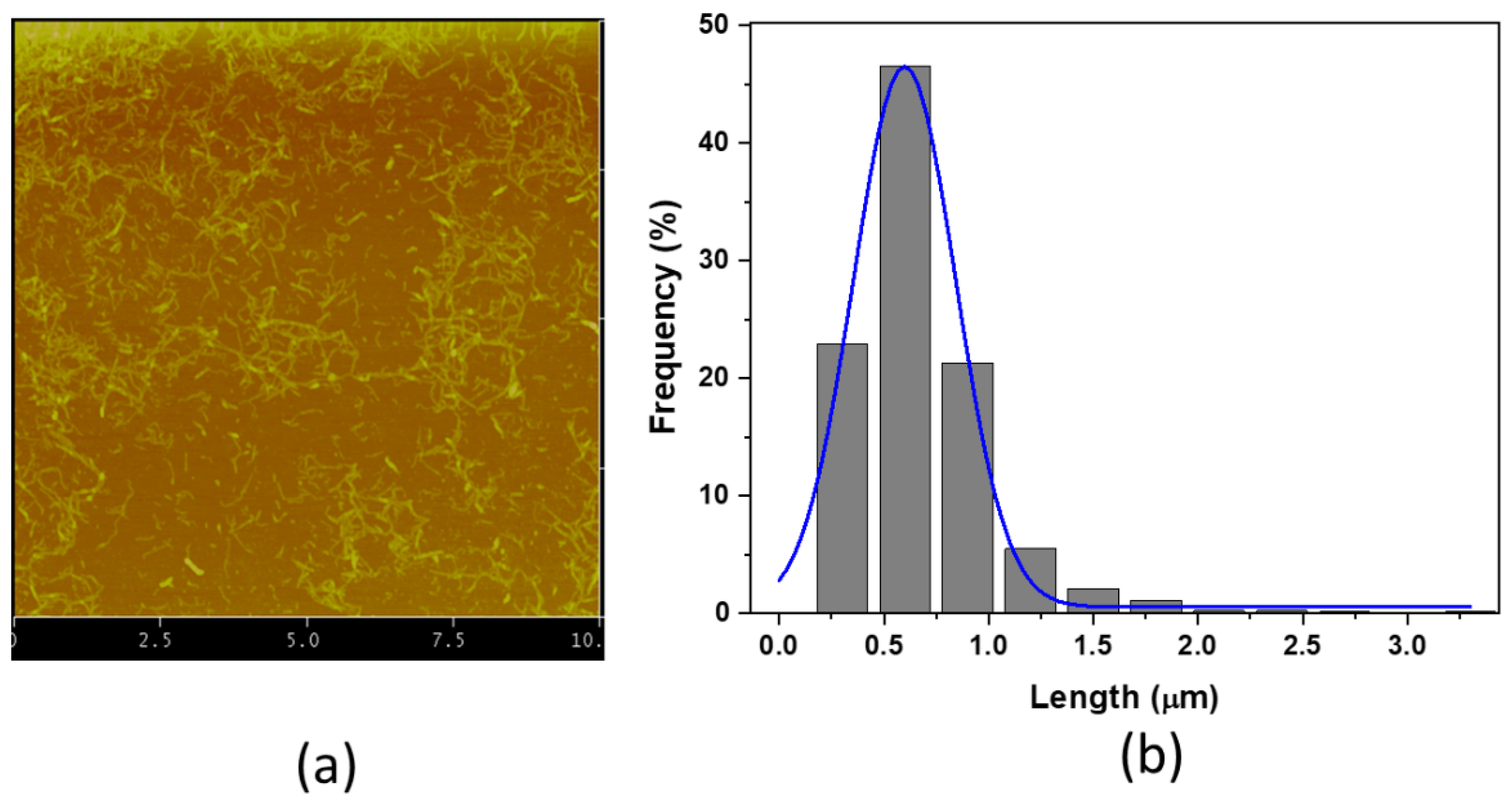
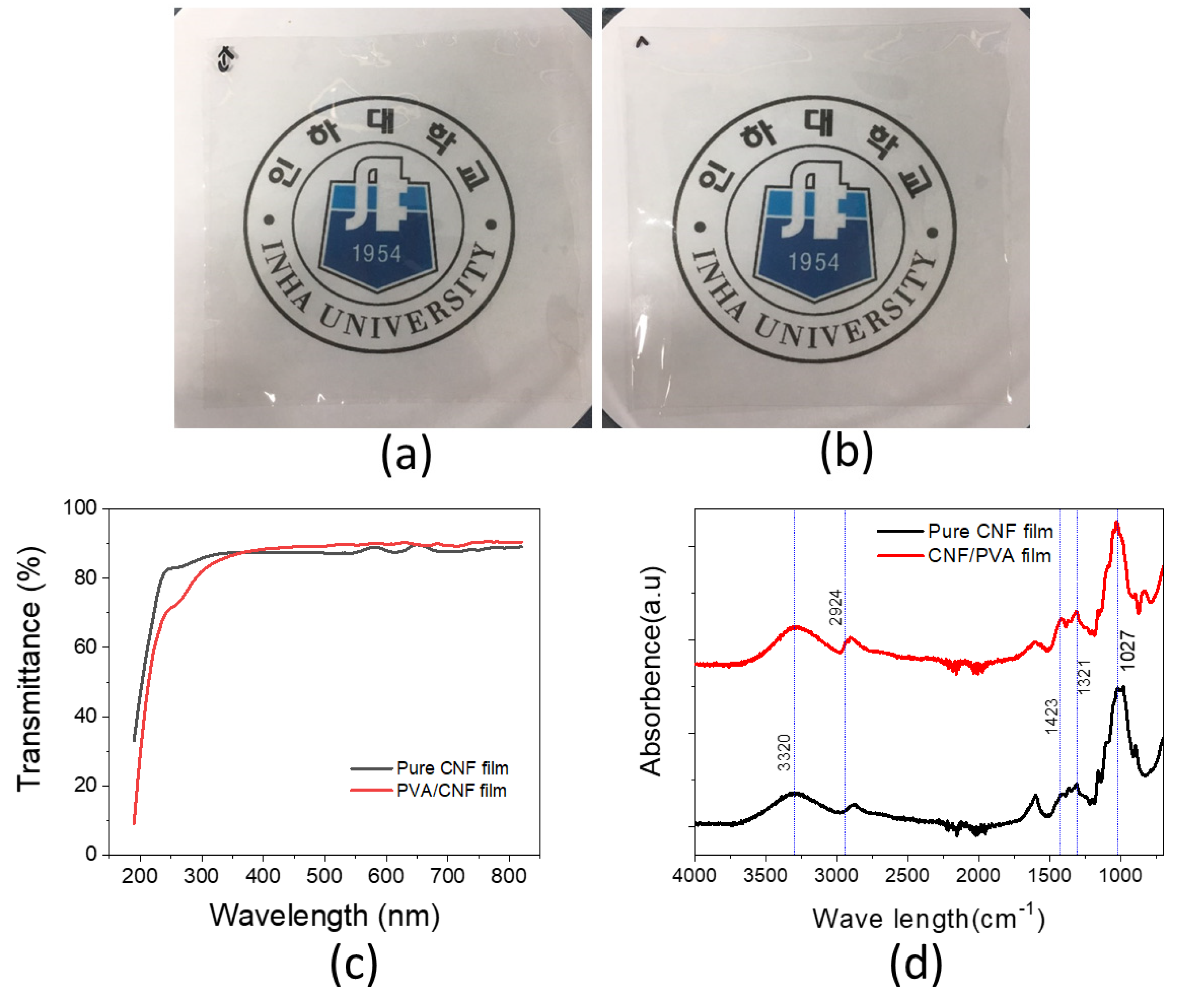
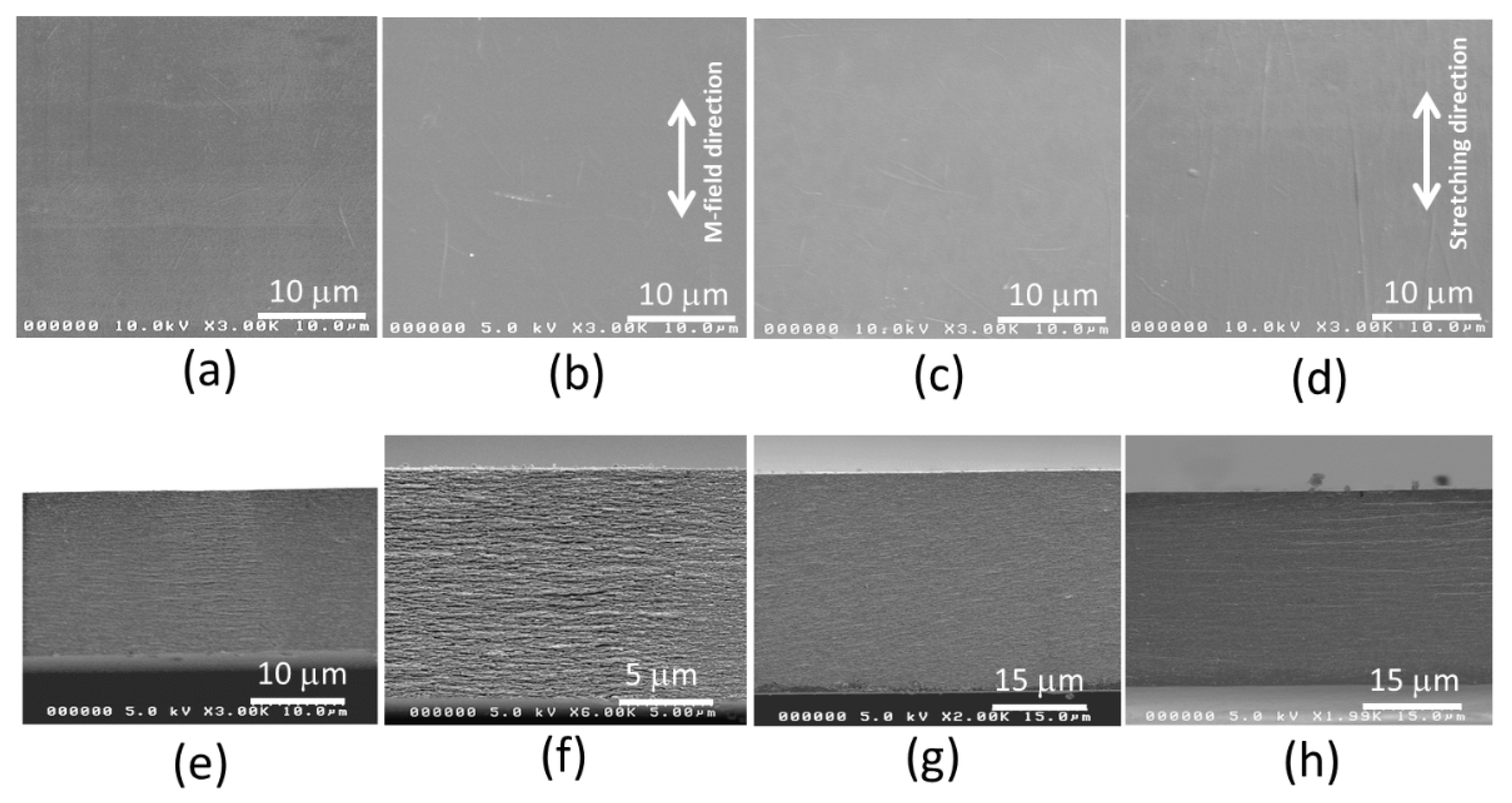


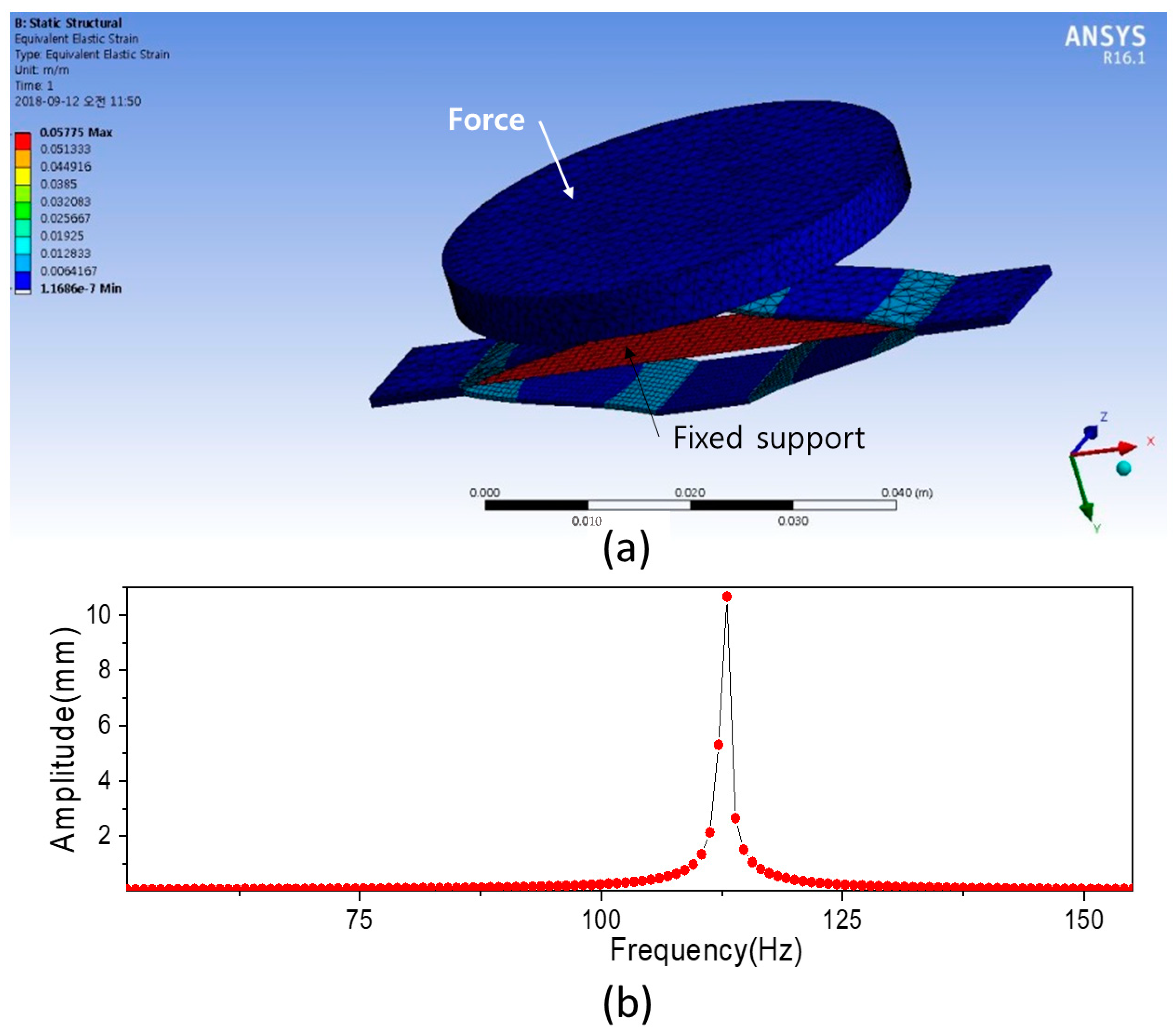
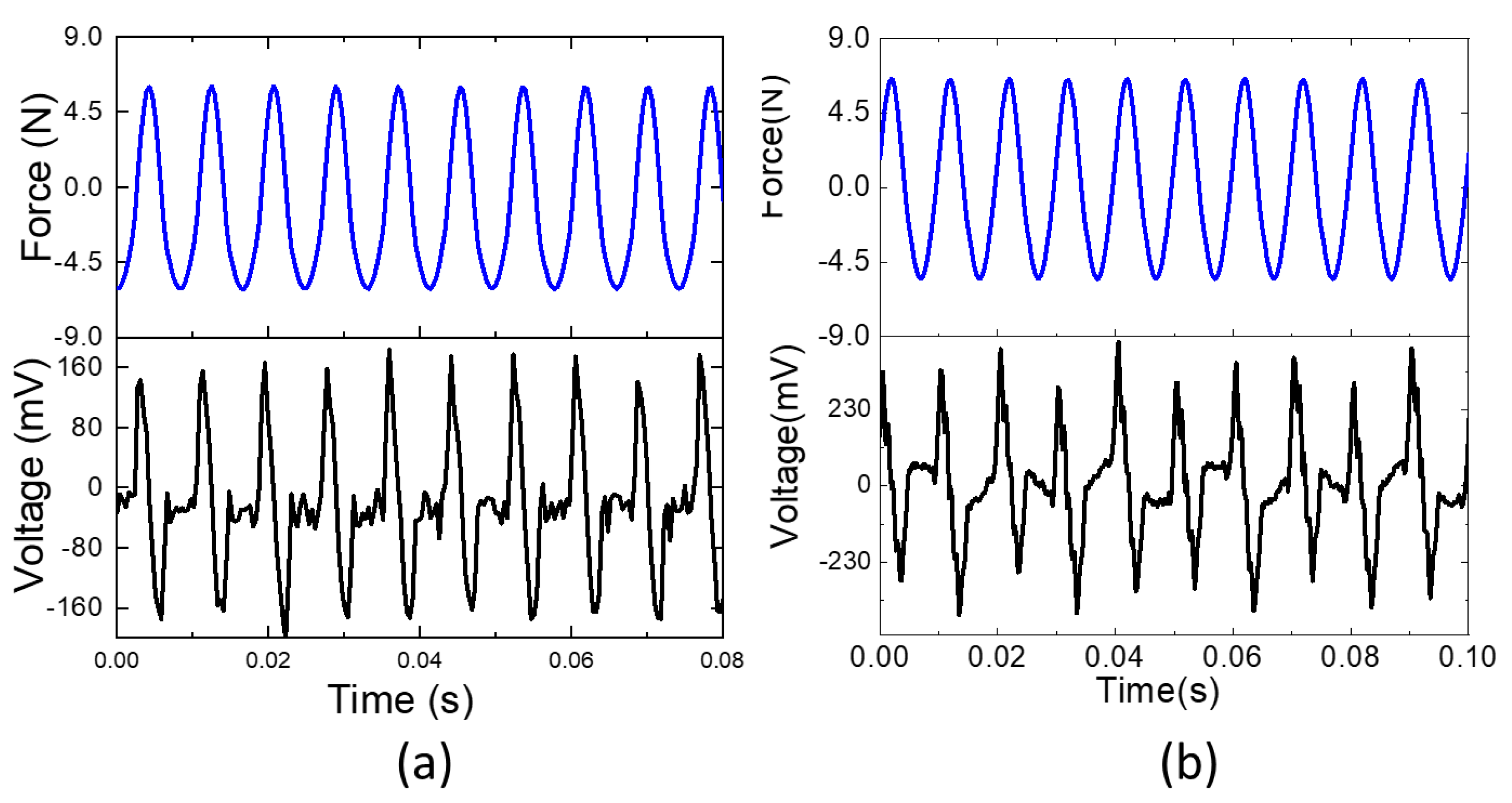
| Film | Young’s Modulus (GPa) | Tensile Strength (MPa) | Strain-at-Break (%) | d31 (pC/N) |
|---|---|---|---|---|
| Pure CNF | 10.1 ± 0.8 | 152.6 ± 43.9 | 2.3 ± 0.8 | 4.8 ± 1.7 |
| M-field applied CNF | 10.3 ± 0.7 | 164.6 ± 31.5 | 3.4 ± 1.9 | 3.7 ± 1.5 |
| Pure CNF/PVA | 11.2 ± 0.8 | 99.0 ± 3.3 | 1.5 ± 0.1 | 2.0 ± 0.9 |
| 50% stretched CNF/PVA | 14.9 ± 1.5 | 170.6 ± 41.6 | 1.3 ± 0.2 | 4.4 ± 2.0 |
Publisher’s Note: MDPI stays neutral with regard to jurisdictional claims in published maps and institutional affiliations. |
© 2022 by the authors. Licensee MDPI, Basel, Switzerland. This article is an open access article distributed under the terms and conditions of the Creative Commons Attribution (CC BY) license (https://creativecommons.org/licenses/by/4.0/).
Share and Cite
Lee, S.-H.; Kim, J. Cellulose Nanofiber Films and Their Vibration Energy Harvesting. Sensors 2022, 22, 6280. https://doi.org/10.3390/s22166280
Lee S-H, Kim J. Cellulose Nanofiber Films and Their Vibration Energy Harvesting. Sensors. 2022; 22(16):6280. https://doi.org/10.3390/s22166280
Chicago/Turabian StyleLee, Seok-Hyun, and Jaehwan Kim. 2022. "Cellulose Nanofiber Films and Their Vibration Energy Harvesting" Sensors 22, no. 16: 6280. https://doi.org/10.3390/s22166280






